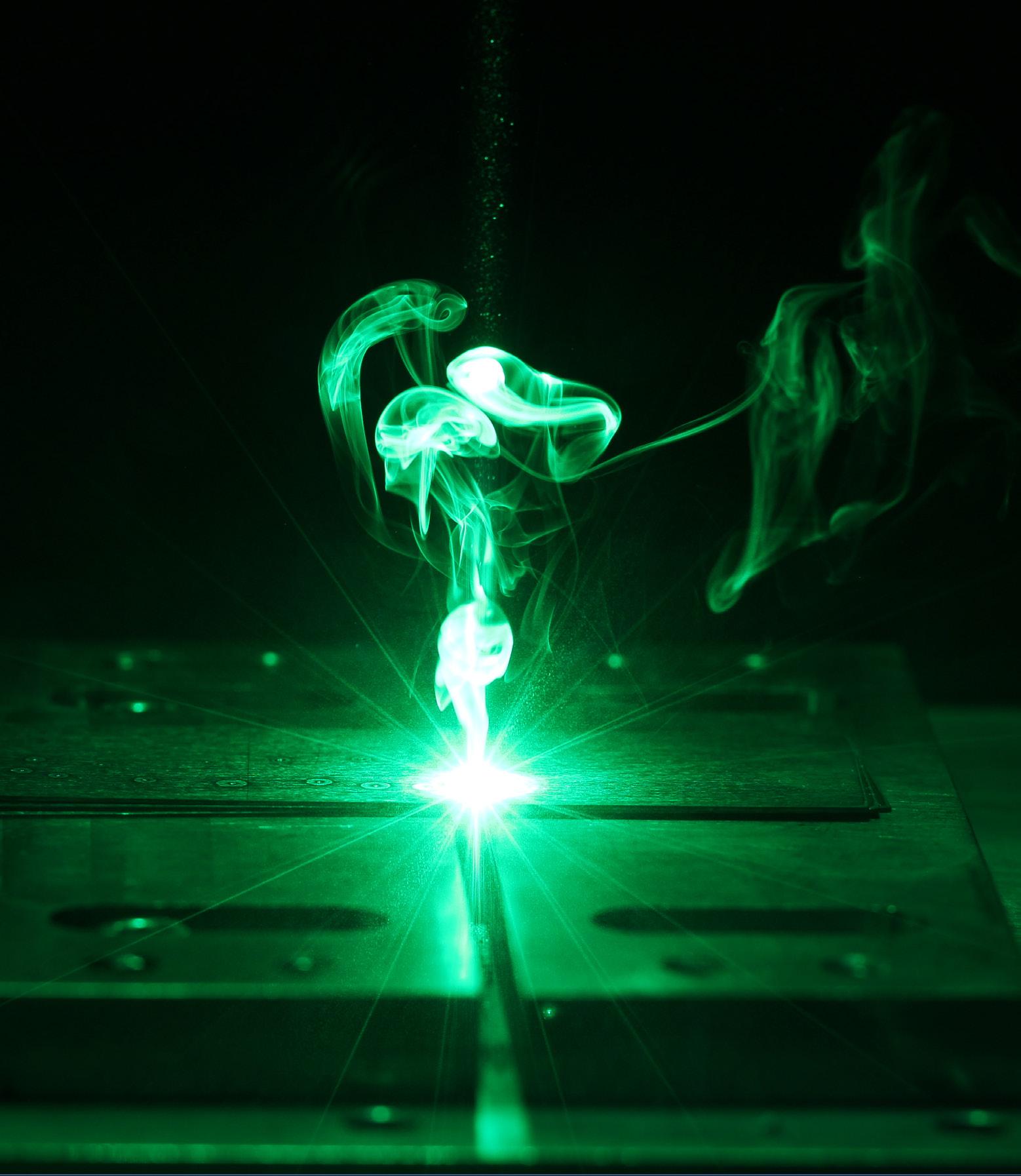
9 minute read
A Green Light for Green Mobility
Powerful disk lasers emitting green light are the perfect tool for welding copper for auto manufacturers and their suppliers.
David Harvilla
Lead Instructor of Laser Technology, TRUMPF Inc.
Stefanie Bisch
Product Manager High Power Green Lasers, Trumpf Laser- und Systemtechnik GmbH
Sebastian Zaske
Product Manager High Power Lasers, Trumpf Laser- und Systemtechnik GmbH
Automotive manufacturers and suppliers require reliable standards for electric car production. Experience has shown that green lasers are the perfect welding tool for electric components made of copper.
Better for the environment, less expensive than gas, less maintenance at a lower cost, quiet operation – these are but a few of the green attributes of the electric vehicle which make it an attractive alternative to the gasoline engine. Electric mobility is currently one of the biggest trends in the worldwide automotive industry. Fueled by a combination of technological progress, statutory requirements and evolving customer demands, electric cars are now on the verge of becoming a genuine mass-market mainstream offering. This has prompted automakers, suppliers and machine makers to determine the best way to produce each e-mobility component in high volume and to a consistently high-quality standard. In some areas, no single manufacturing technology has emerged as an established standard, one example being the joining and welding of copper electrical components in the battery, motor and powertrain. However, the high-power green laser has proven to meet the stringent production requirements of high productivity, excellent quality welds with reproducible results.
The Green Supremacy
Copper – and to a lesser degree aluminum – is an ideal choice for electrical connectors due to its high electrical and thermal conductivity. Copper conducts electricity and heat better than any other commonly used industrial metal. Unfortunately, it absorbs very little infrared light, which is exactly the wavelength regime in which most
industrial lasers operate. Working at a wavelength of around one micron, these lasers have a tough time processing copper. At room temperature, copper reflects 95 percent of infrared light and only absorbs between 3 and 5 percent. As the temperature of the copper increases, so does the rate at which it absorbs infrared laser light, climbing as high as 20 percent. Getting the welding process started requires significant energy input. The material heats up and as soon as the melting temperature is reached, the rate of absorption suddenly increases, producing a spike in energy that is difficult to control. This complicates the production process by causing a delay in the onset of welding that cannot be precisely reproduced even when using identical parameters – so it is impossible to be sure in advance where the weld seam will start. In addition, the excess energy leads to erratic processes with spatter along the entire weld path. This is something that is completely unacceptable in a confined environment full of sensitive electronics, especially when manufacturing electric cars. With green laser light, on the other hand, all these problems disappear. Scientists have long known that copper absorbs short-wavelength laser light significantly better than long-wavelength light. But only in the past few years have beam sources come onto the market that can deliver this light at the power levels required for industrial welding. Modern industrial disk lasers that operate in the green spectrum (515 nanometer wavelength) can now deliver two kilowatts of power output. At room temperature, copper absorbs 40 percent of this green laser light – a rate of absorption that is eight times higher than the near-infrared wavelengths. This significantly improves welding, leading to a much more stable processes, smoother bead surfaces, low-spatter formation and more consistent penetration depths.
Green Light - Cu for Welding
Green light offers specific benefits when it comes to processing this challenging metal. For one thing, it enables users to carry out reproducible heat conduction welding of copper – something that is currently impossible with near-infrared lasers. Penetration depths of up to 500 microns can be achieved in industrial settings using heat conduction welding with a two-kilowatt laser power. Green light also makes the heat conduction welding process completely spatter-free, helping to create a smooth weld seam surface. Since there is no keyhole formation and therefore no metal vapor, the seam is free of pores. This increases the conductivity of the joint. Deep penetration welding of copper is another area where the benefit of green light really shines. With a green laser power of two kilowatts users can achieve consistent weld depths of up to 1.5 millimeters, which is unachievable with near-infrared lasers. What’s more, the higher absorption rate means welding can also be performed with defocused laser light. The green laser then produces a wedge-shaped keyhole that gets wider toward the top, creating a seam form that makes it easy for vapor to escape. This results in stable, low-spatter processes and an even weld seam surface. Another benefit to using green light is that relatively little heat is transferred to the part being welded. Absorption is high, which means the processing time is relatively short, so minimal heat is lost into the material. The part distorts less and is subjected to a lower thermal load. What’s more, users do not have to resort to beam oscillation (wobbling) to achieve high seam quality but can simply stick to linear welding. This allows for a high feed rate and thus higher productivity. It also makes the process simpler because fewer parameters need to be defined. Not to mention, there is no need for more expensive beam delivery optics that oscillate or wobble the beam.
In an industrial setting, this means that, in many cases, users can do without upstream surface preparation processes such as sandblasting or tin coating if they use a green laser.
Numerous tests have demonstrated that surface conditions of the copper have no effect on results when welding with green light. In other words, it makes no difference whether the copper is polished, sanded, untreated or heavily oxidized. The weld depth or consistency is not affected by the degree of oxidation, superficial scratches or highly reflective, mirror-finished surfaces. In an industrial setting, this means that, in many cases, users can do without upstream surface preparation processes such as sandblasting or tin coating if they use a green laser.
polished
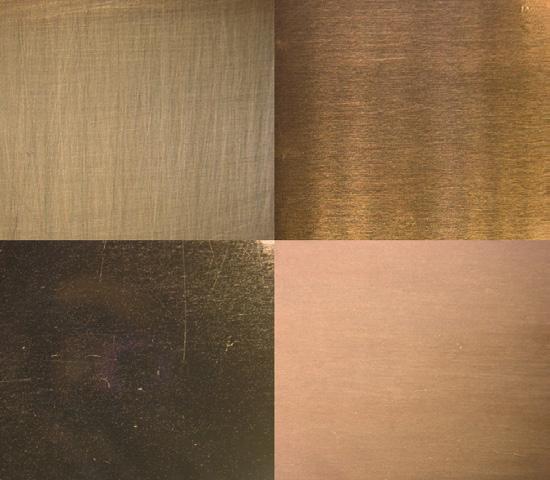
acid treated
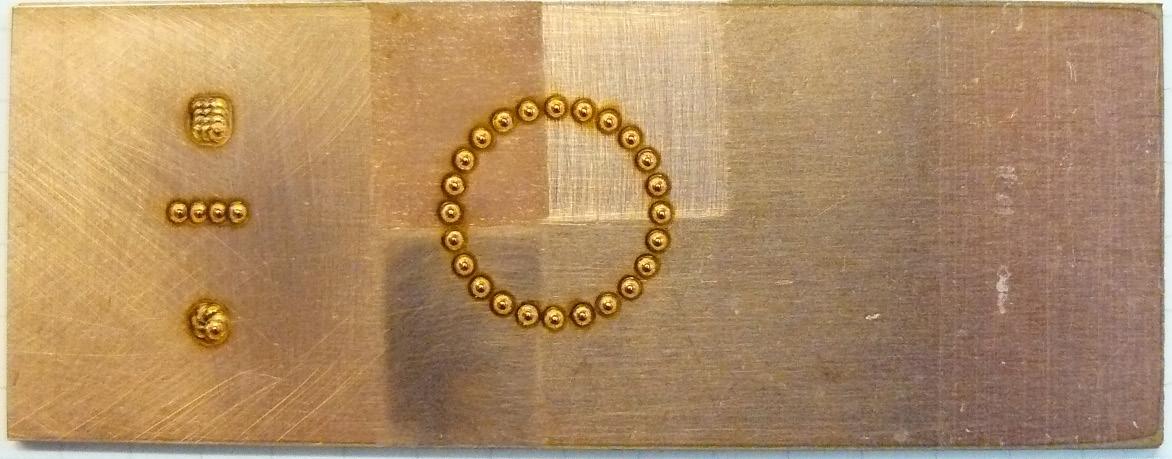
Figure 1: The surface of the copper makes no difference to green laser light. The results are the same for polished, sanded, untreated or etched surfaces – and even scratches and varying degrees of oxidation have no influence.
As well as being an excellent choice for processing copper, green laser light is also suitable for other widely used industrial metals such as aluminum, steel and gold. That makes the green laser particularly interesting for users who wish to process a range of materials with a single beam source.
Applications in E-Mobility
The field of component manufacturing for electric cars offers numerous applications for powerful green laser light – from the battery and powertrain to the power electronics. Four key applications offer particular promise:
Battery foil welding: Battery cells consist of stacked layers of very thin copper and aluminum foils. Each foil is welded to a tab made of the same material before the cell is filled with electrolyte. Two key challenges arise during battery foil welding. First, air between the foils can potentially lead to well spatter. Second, to ensure that the foils (low thermal capacity) do not burn before enough heat has reached the tab (high thermal conductivity). Using green laser light, users can achieve a large, pore-free bonding surface and reduced spatter formation, especially with copper foils.
2 mm
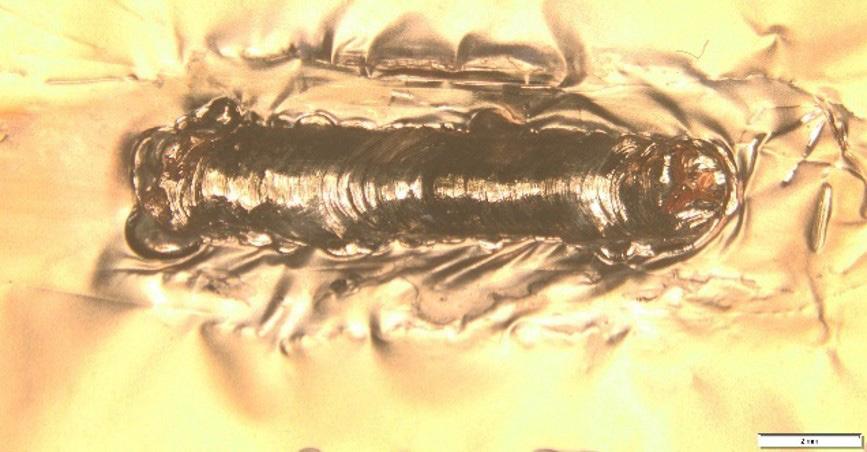

500 μm
Figure 2: Welding one hundred 6-micrometer battery foils to a 2 x 0.5-millimeter copper tab: a large, pore-free bonding surface and a smooth top bead with minimal spatter formation.
Welding cell connectors: The welding process used to connect battery cells often brings together different materials. A typical combination is welding copper to aluminum or vice versa. By creating a weld seam in a meandering motion using green laser light, users can achieve a large bonding surface with a high tensile strength of significantly more than 600 Newtons for connections between different materials. The high laser power enables high feed rates and high productivity with minimal heat input to the underlying part. The high process speed also helps suppress the formation of undesirable intermetallic phases.
Busbar welding: Copper busbars are used in applications such as battery modules and power electronics. They are generally welded in an overlap joint. With a power output of two kilowatts, the green laser is the
ideal choice for quickly and reliably welding copper sheets measuring 0.5 by 2 millimeters, for example. To further increase the cross-section and thus the conductivity of the join, a circular geometry instead of a linear weld seam can be utilized.
500 μm
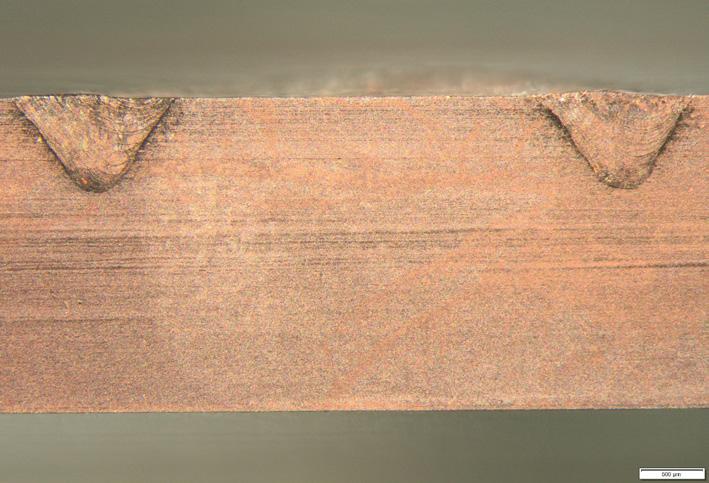

1 mm
Figure 3: Busbar welding with copper sheets measuring 0.5 by 2 millimeters: a consistent penetration depth in a welding time of just 0.42 seconds.
Welding contacts for DBC substrates: DBC (Direct Bond Copper) substrates for power electronics are heat sensitive. They are generally contained in an extremely confined space, which makes access difficult. Scanning optics can be used to position green laser pulses precisely at the weld point. The rapid welding process means that very little heat enters the contact and the surrounding structure, so the thermal stress load is low. Penetration depth can be precisely controlled and reproduced – and the heat-sensitive DBC substrate remains intact while the contact is being formed. There is also significantly less spatter due to the green laser wavelength. Spatter can lead to short circuits and the destruction of the entire component, especially in the case of power electronics components.
Figure 4: Connecting copper contacts to DBC substrates: green laser light offers a controlled penetration depth that keeps the DCB substrate intact. Scanning optics guide the light to the exact processing point even when space is tight.
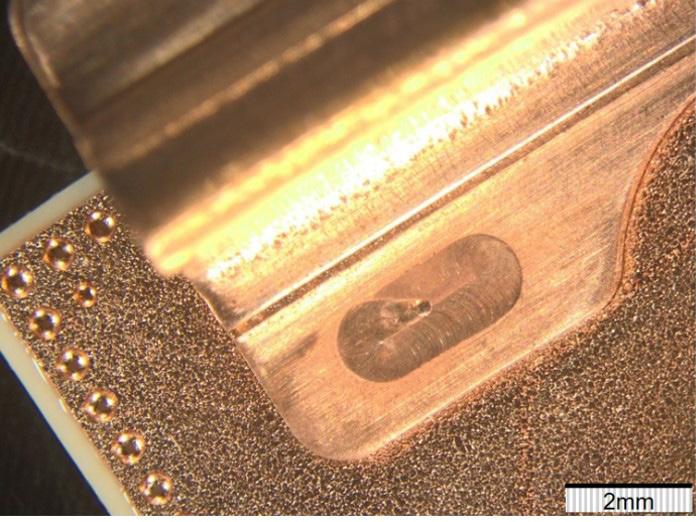
Green Gives Blue Light the Blues
In principle, similarly good results should be achievable with blue laser light (450 nanometers), which is next to green on the wavelength spectrum. Technically speaking, it makes no significant difference whether green or blue light is used in terms of the resulting coupling behavior in copper. But what does make a difference is the choice of beam source. Currently available beam sources for blue are based on gallium nitride diode material, which has not yet proven its durability for laser material processing in industrial settings. In contrast, disk lasers with a green wavelength use the same diode material as infrared disk lasers, which have been proven in the field for many years. Green lasers are also superior to blue lasers in terms of the power output that is currently achievable. However, the biggest advantage of green light from disk lasers compared to blue light from the diode is its significantly better beam quality of up to 2 mm*mrad with a small numerical aperture of










